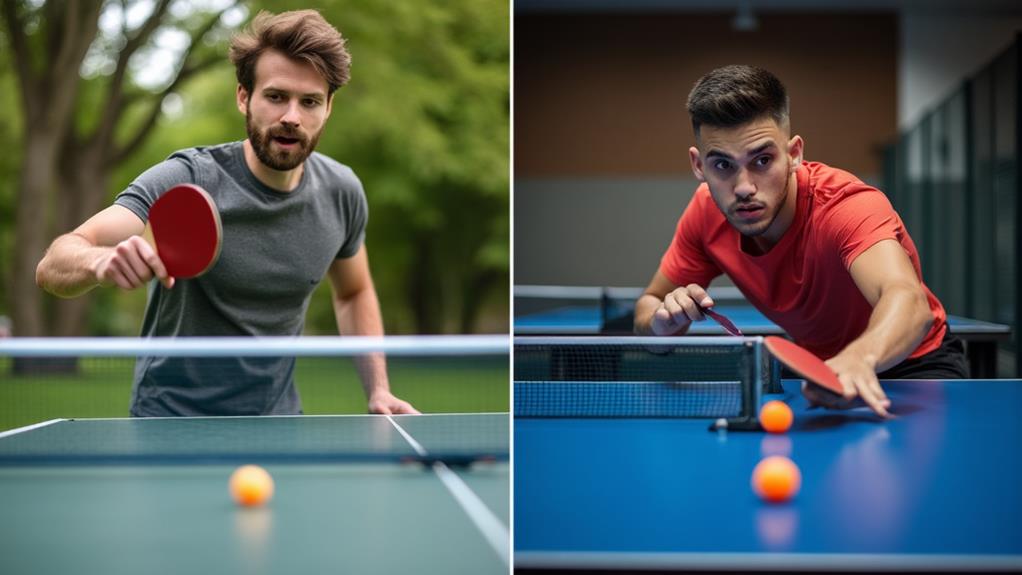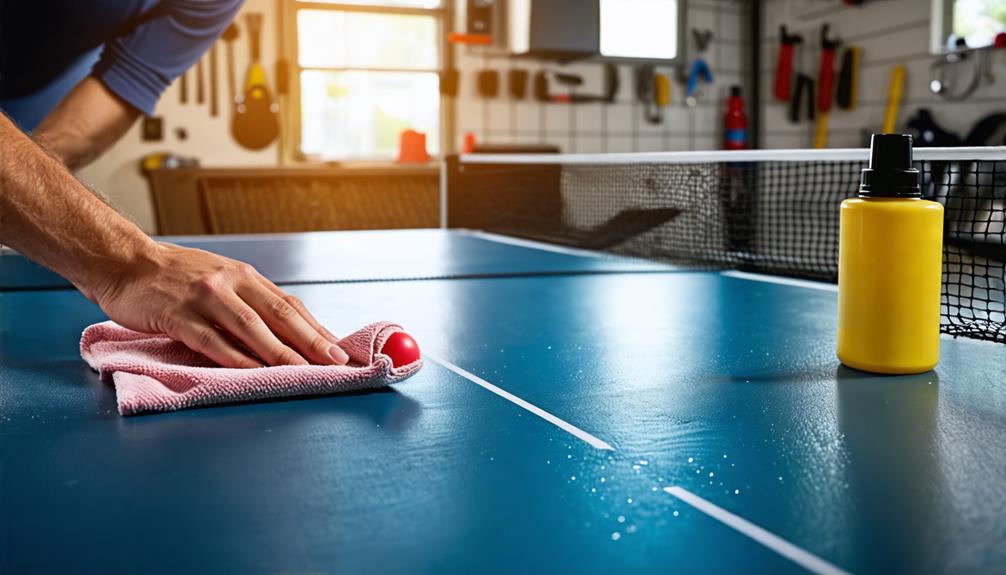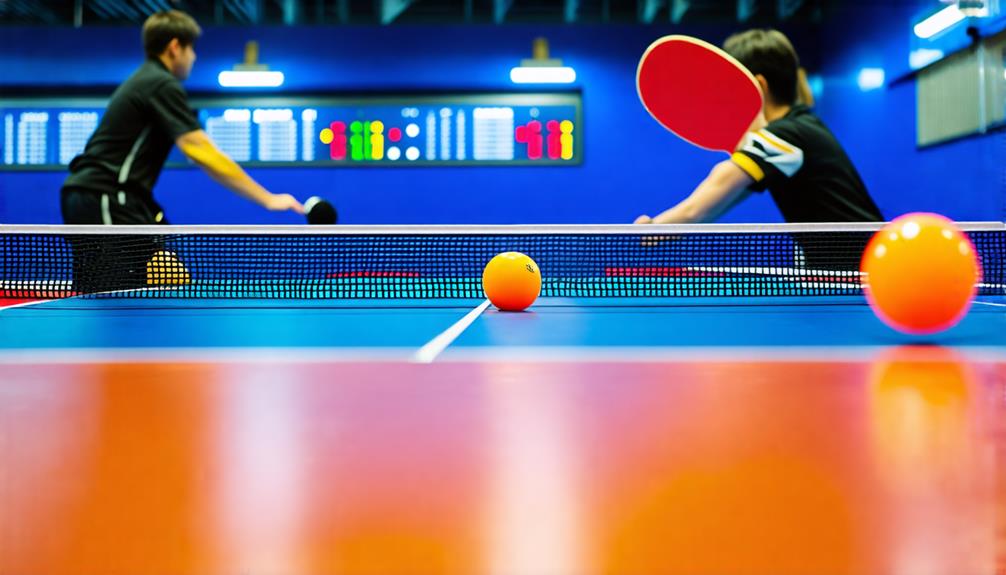What Is the Two-Color Rule in Table Tennis?
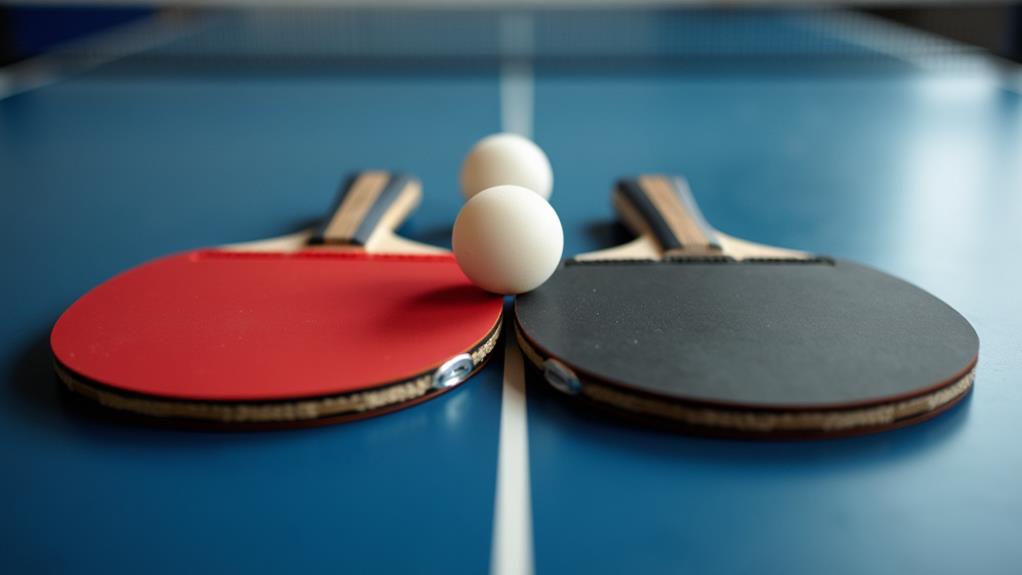
The two-color rule in table tennis, established in 1986, mandates paddles to have one side bright red and the other black. This rule increases visibility, helping players identify the rubber types their opponents use, ensuring fair play. Starting in 2021, while the black side remains compulsory, other colors like blue, green, purple, or pink can now replace the red side. This change not only advances strategic gameplay but also elevates the spectator experience by making it easier to follow matches. Understanding these nuances can give you a deeper appreciation of the game's strategies and practices.
History of the Two-Color Rule
The two-color rule in table tennis officially came into play on July 1, 1986. This significant change required players to have one side of their paddle bright red and the other side black. The main reason behind this rule was to prevent the use of combination rackets with identical colors. These rackets made it incredibly challenging for opponents to predict the ball's spin and trajectory, giving an unfair advantage.
By mandating two different colors—red and black—the International Table Tennis Federation (ITTF) aimed to promote fair play and improve the spectator experience. This new regulation made it easier for both opponents and audience members to follow the game and understand the strategies involved. The black side became a standard requirement, ensuring uniformity and clarity.
In the late 1970s and early 1980s, the increased use of combination rackets with matching colors highlighted the need for clearer color differentiation. The official rules were therefore updated to address this issue, reflecting the evolving nature of the sport. Although the ITTF expanded color options in 2021, the black side requirement remains, maintaining the rule's integrity and original intent.
Evolution of Rubber Colors
How did the evolution of rubber colors transform table tennis? The introduction of the two-color rule on July 1, 1986, was a game-changer. By mandating one side of the paddle to be bright red and the other black, it improved visibility and fairness. Before this, players often used paddles with identical colors, making it tough for opponents to predict the ball's spin and trajectory.
This shift didn't just level the playing field; it also allowed players to better identify different types of rubbers used by their opponents. The black rubber and red side became the standard, aiding not only players but also spectators in understanding the game's dynamics.
In 2021, the ITTF expanded the color palette, permitting blue, green, purple, or pink on one side while keeping the black on the opposite side. This change reflects advancements in equipment design and technology. It also emphasizes the ongoing efforts to maintain competitive integrity by using approved rubbers. These new rubber colors offer more personalization while preserving the core principles of the two-color rule, ensuring that table tennis remains fair and exciting for everyone involved.
Impact on Gameplay
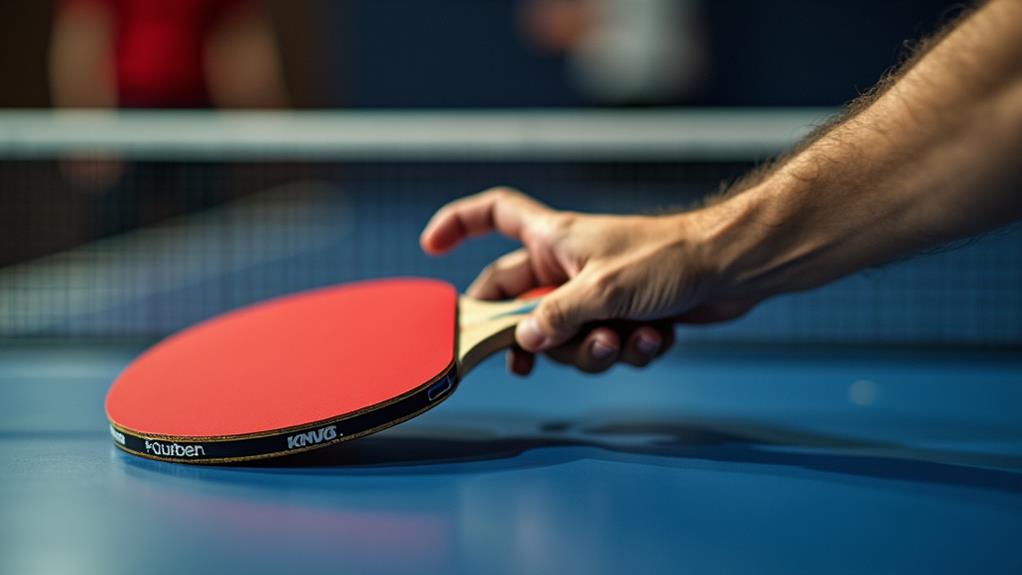
When the two-color rule came into effect in 1986, it transformed table tennis gameplay. The rule mandates that one side of your paddle must be bright red while the other side must be black. This makes it easier for you and your opponents to identify the spin and speed characteristics of each shot. With different colors on each side, you can quickly anticipate how the ball will react, enhancing your strategic gameplay and decision-making.
By allowing players to flip their paddles during rallies, the two-color rule adds a dynamic element to the game. Your opponents have to quickly adjust their perception and strategy based on which side of the paddle you're using. This keeps the gameplay exciting and unpredictable, requiring constant focus and quick adaptation.
Moreover, the rule helps spectators engage better with the game. They can visually track which side of the paddle is being used and understand the potential spin dynamics of each rally. Before matches, you're allowed to inspect your opponent's paddle to verify compliance with the two-color rule, promoting fairness and transparency. In general, this rule has made the game more interesting and competitive for everyone involved.
Strategic Advantages
Recognizing the impact on gameplay, we now investigate the strategic advantages the two-color rule offers. By enforcing the use of one red rubber and one black rubber on paddles, players can better inspect their opponents' equipment before matches. This inspection lets you analyze the playing characteristics of the rubbers, such as the faster ball movement from red rubber and superior spin control from black rubber. This understanding allows you to tailor your strategy based on the expected spin and speed of your opponent's shots, creating a strategic dynamic in play.
Flipping your paddle during a match to alternate between red and black rubbers can confuse your opponent, making it harder for them to predict the spin and speed of your shots. The visual contrast provided by the two-color rule helps you quickly gauge your opponent's actions, leading to improved reaction times. This strategic advantage is vital, as it improves your decision-making during high-pressure moments.
Ultimately, the two-color rule transforms how you approach each point, leveraging the distinct playing characteristics of red and black rubbers to outmaneuver your opponent and gain the upper hand in matches.
Equipment Regulations
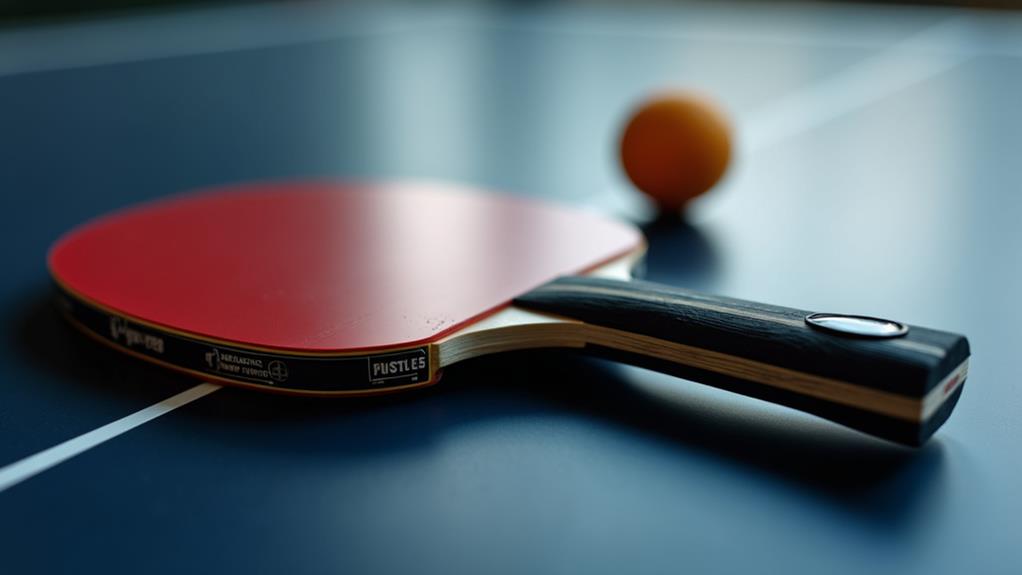
Adhering to equipment regulations in table tennis guarantees a level playing field and upholds the sport's integrity. One key regulation is the two-color rule, which requires your paddle to have one side bright red and the other side black. This helps opponents easily distinguish between the rubber sheets and their effects on the ball. As of 2021, the ITTF expanded color options, allowing one side of your paddle to be red, blue, green, purple, or pink, while the other side remains black.
It's essential to use ITTF-approved rubbers, which must display the ITTF logo to verify compliance with equipment standards. When you compete, you can inspect your opponents' rackets before the match. This inspection confirms that their paddle meets all regulations, promoting transparency and fair play.
The two-color rule prevents players from using combination rackets with identical colors, which could obscure the spin and trajectory of the ball, maintaining the integrity of the game. So, always verify your paddle adheres to these regulations, from the color of the rubber sheets to the use of ITTF-approved materials, to keep the competition fair and exciting.
Rubber Types and Properties
Understanding the intricacies of rubber types and their properties can improve your table tennis game to the next level. Different rubber types, such as pimpled rubber and sponge layers, can greatly affect your play. Pimpled rubber, with pimples facing outward, offers distinct advantages in speed and defensive play. Meanwhile, rubbers with pimples facing inward allow for greater spin control and are ideal for offensive strategies.
Red rubbers and black rubbers also play unique roles. Generally, red rubbers are faster and produce less spin, making them perfect for aggressive shots. On the other hand, black rubbers are known for their superior spin control, giving you the edge in spin-based tactics. The thickness of the rubber and the orientation of the pips are vital factors table tennis players must consider when customizing their paddles.
Each side of your paddle must be covered with ITTF-approved rubber, displaying the ITTF emblem to guarantee you're compliant in competitive play. Customizing rubber sheets lets you tailor your paddle to your playing style, optimizing for spin, speed, and overall performance. By understanding and choosing the right rubber types, you can considerably enhance your table tennis skills.
Maintenance and Care
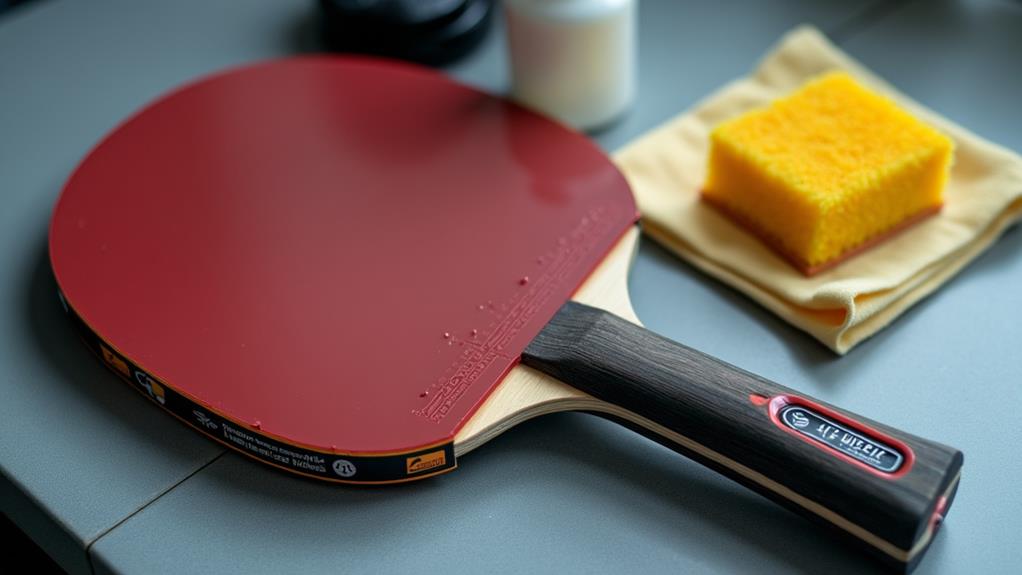
Keeping your table tennis paddle in prime condition is vital for maintaining peak performance. Regular maintenance of your Table Tennis Bats is important, starting with cleaning the rubbers. Use commercial cleaners or a simple water and soap mixture to remove dirt and maintain the necessary friction for best gameplay. Each side of the paddle deserves attention, regardless of the different colors, to guarantee consistent performance.
Inspect the rubbers frequently for signs of wear or damage. Neglecting this can lead to reduced effectiveness during matches. Over time, a glossy patina can form on the surface, hindering performance. Regular cleaning helps prevent this and prolongs the life of your rubbers.
Proper storage is another significant aspect of maintenance. Keep your paddle away from extreme temperatures and direct sunlight to preserve the rubber's integrity. This simple habit can greatly improve the longevity of your equipment.
When it comes to reapplying rubbers, avoid high VOC glues or speed glues, as these are banned by the ITTF. Instead, use table tennis-specific brands for rubber adhesion to maintain compliance with regulations and sustain your paddle's performance.

